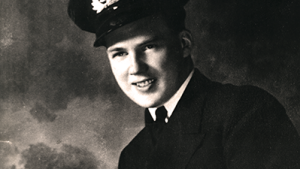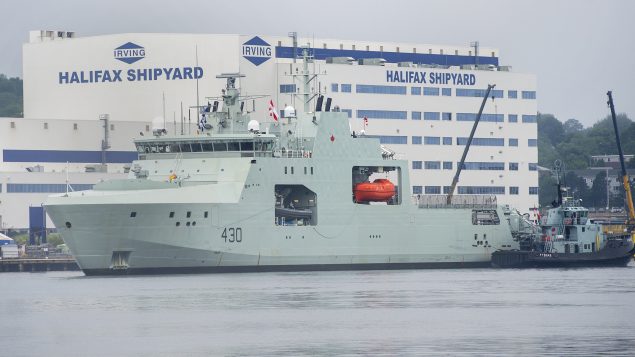The Royal Canadian Navy says its sixth Arctic patrol vessel will be named after Lt. Robert Hampton Gray, a Second World War navy hero.
With the addition of these new ice-capable warships the military will be able to beef up its ability to patrol and protect Canada’s northern coastal waters.
These Arctic and Offshore Patrol Ships (AOPS), built at the Irving shipyard in Halifax, are able to operate in up to 120 cm of first-year sea ice, carry a submarine-hunting Cyclone helicopter as well as small vehicles, deployable boats, and cargo containers.
The Canadian Coast Guard will also receive two civilian versions of the patrol ship.
The navy officially received the first of its Arctic patrol vessels, HMCS Harry DeWolf, at the end of July.
Each ship is named after a prominent Canadian naval figure. The other five ships are named Harry DeWolf, Margaret Brooke, Max Bernays, William Hall and Frédérick Rolette.

Gray joined the Royal Canadian Naval Volunteer Reserve in 1940, and served as a pilot in the Royal Navy Fleet Air Arm. (Submitted by the Royal Canadian Navy)
Gray volunteered for the naval reserve in 1940 and served as a pilot in the Royal Navy Fleet Air Arm.
Gray served in Britain, East Africa and finally with the British Pacific Fleet which, in the final weeks of the war, was operating against the Japanese home islands with the United States Navy’s Third Fleet.
Gray embarked on HMS Formidable with 1841 Squadron, which joined the war in the Pacific as part of Operation ICEBERG in April 1945.
Three months later, he received the Distinguished Service Cross for sinking a Japanese destroyer on 28 July 1945.
Gray was awarded the Victoria Cross posthumously, for courage and determination in carrying out air strikes on another Japanese destroyer, Amakusa, on Aug. 9, 1945.
He was the only member of the Royal Canadian Navy to be awarded the Victoria Cross during the Second World War.
The London Gazette gave the following citation on Nov. 13, 1945.
“In the face of fire from shore batteries and a heavy concentration of fire from some five warships Lieutenant Gray pressed home his attack, flying very low in order to ensure success, and, although he was hit and his aircraft was in flames, he obtained at least one direct hit, sinking the destroyer. Lieutenant Gray has consistently shown a brilliant fighting spirit and most inspiring leadership.”







For reasons beyond our control, and for an undetermined period of time, our comment section is now closed. However, our social networks remain open to your contributions.